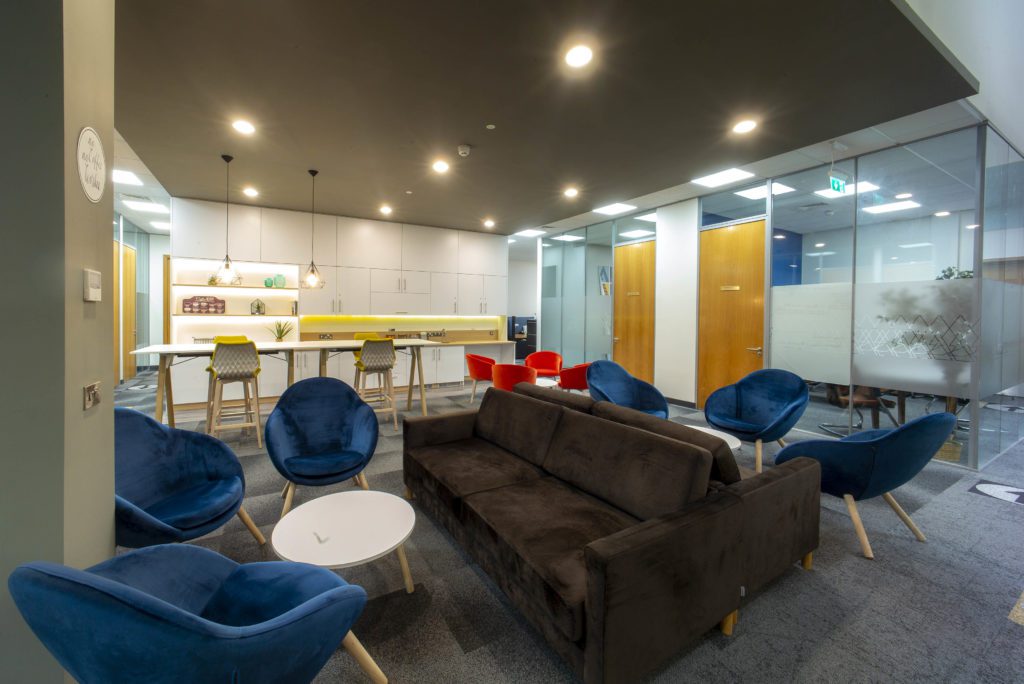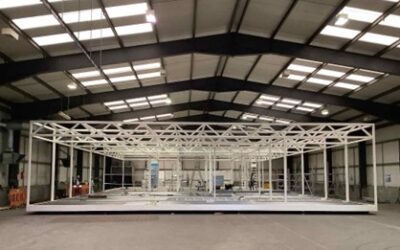
Does the culture of a business define the workplace design?
The short answer is no, not always. However, the correct answer is that it should always define and influence the workplace design.
This blog will explore the link between workplace design and business culture, understanding factors such as the culture gap, culture definition and the elements that make up a business culture.
The layout of a workspace can be staid, dull and uninspiring and often, not even questioned.
There could be structural reasons for a certain layout, things that can’t be moved, or cases where the original layout was just designed and built without any attention or consideration to the culture the business wanted to create.
Culture is probably a term that many businesses don’t fully understand. It is only in recent times that business owners are starting to build an understanding of employee wellbeing, job satisfaction, motivation, and retention, that culture has even become a talking point.
The Culture Gap
To tackle the culture gap, business owners need to have a clear vision of where they want their business to be. It is necessary to assess where the business currently is and then evaluate the strategies, practices and cultural behaviours required to get to where they aim to be.
The workplace environment is a key part of emphasising the right behaviours and facilitating the correct practices that will enable the strategy to be fulfilled for a successful outcome.
For example, if a business identifies that ‘working as a team’ is one of the key behaviours required for successful implementation of the strategy, then a workplace environment that does not facilitate collaboration is not as likely to reinforce that kind of behaviour.
Similarly, if the business requires creativity or innovation, does the workplace design lend itself to that by providing quiet areas for contemplation and focus?
By thinking about the behaviours required to achieve the strategy, businesses can start to develop the necessary environments that these behaviours would thrive in and factor them into their workplace design.
Defining the business culture
Understanding what your existing culture is, is the key to taking small steps towards improving it. It can be defined as simply, ‘the way we do things around here’, the way things are naturally processed, from relationships between departments, to decision making roles and responsibilities. For example, a micro-management style, will provide a different culture, to an empowered management style and so it is important to carry out focused analysis of what the current ‘way’ is within the company.
Elements of business culture
The factors that can determine your business culture are:
Your businesses vision, mission and values.
Knowing what they are and communicating them adequately with your people. A team who knows where they’re going, why they are going there and how they are expected to get there, is a contributing factor to a business’s success. Your workplace needs to support those key elements.
Your people.
This could refer to how your management lead, how skilled and motivated your people are and what their level of drive and ambition is. These things will have a huge impact on the way your people behave.
Your workplace environment.
Are your employees’ basic environmental needs taken care of? Do you provide the right amount of natural light, fresh air, clean surroundings, facilities as a minimum, but then also thinking about the processes and actions that take place and whether the environment is conducive to the flow of activity?
Your processes.
In alignment with workplace environment, the processes are very closely linked and have a huge impact on business culture. The methods by which tasks are achieved can make the difference in someone’s day between having a good day, or a real headache. If your workplace layout makes processes more difficult than they need to be, your employees are going to feel that frustration.
Communication.
Communication is important in any business. Not only in how you convey your business’s mission, vision and values, but also in how you share information and ideas as an entire team. Poor interdepartmental communication can have a negative impact on the employee’s ability to do their job and the overall company morale. Your workplace environment should aim to facilitate a positive experience.
Reward and recognition.
There is no one-size-fits-all strategy when it comes to reward and recognition. At a basic level, reward and recognition comes from the pay packet, but businesses are recognising the need to offer more to retain good staff. Alongside learning & development and employee benefits, cool & trendy workspaces are increasingly being used as a key differentiator to entice younger generations to work for a business.
In summary, whilst sometimes there is a contradiction between the company’s brand values and the ‘real’ culture of the organisation, it is the people that define the culture, and the workspace has the power to enable it to thrive.
This underpins just how important it is to get the workplace environment just right to build the company culture that you really want.
If you would like more information on how we can help, speak to a member of the Ardmac team.



